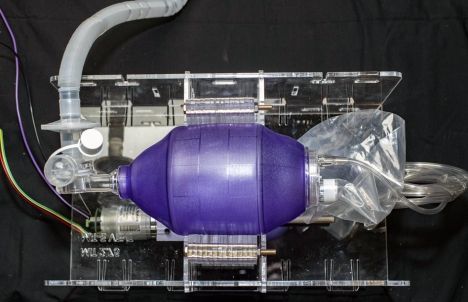Alumni and supporters look to MIT in time of crisis.





It is vital that would-be bombmakers be disabused of any notion that they could evade tough international sanctions. We need a country-neutral, reasonably predictable, more-or-less automatic sanction regime that puts all countries on notice, even friends of the powerful.
By Victor Gilinsky Henry Sokolski
Just as we’ve had to discard business-as-usual thinking to deal with the current worldwide health emergency; it’s time to get serious about the spread of nuclear weapons. It doesn’t have the immediacy of the coronavirus, but it will last a lot longer and is no less threatening. In particular, we need to fortify the Nuclear Nonproliferation Treaty (NPT), which is fifty years old this year and badly needs fixing. The April 2020 Review Conference will likely be postponed, which provides time to develop something more than the usual charade of incremental proposals that nibble at the problem.




An interesting opinion:
The US Government Comparative Toxicogenomics database shows that Fluoride can inhibit Human immunity to viruses and pneumonia. Angiotensin I-Converting Enzyme (ACE), 2’-5’-Oligoadenylate Synthetase 1 (OAS1) and Intercellular Adhesion Molecule 1 (ICAM1) are included as susceptible epigenetic targets of the poison.
Read 3 answers by scientists with 1 recommendation from their colleagues to the question asked by Geoff Pain on Feb 4, 2020.
O„,.o yeah what about unauthorized clones o„,.o.
Heather Dewey-Hagborg never leaves a trace of herself anywhere. An artist and activist, Hagborg wants people to understand the hidden secrets in the DNA they leave behind everywhere they go — and what people can do with them. She developed a spray that can mask your DNA wherever it’s left. Hagborg understands that her spray could be used by criminals too, but she’s convinced that as technology develops, it will be an essential tool to preserving our safety and privacy.
For more stories profiling pioneers of science and tech innovation, subscribe to Freethink at https://www.youtube.com/freethinkmedia
Join the Freethink forum to share news and find more ways to make a difference: http://www.facebook.com/group
And follow Freethink across other platforms here:
Facebook: https://www.facebook.com/freethinkmedia

Claims that the cure is worse than the disease rely on a false tradeoff between human needs and the economy.